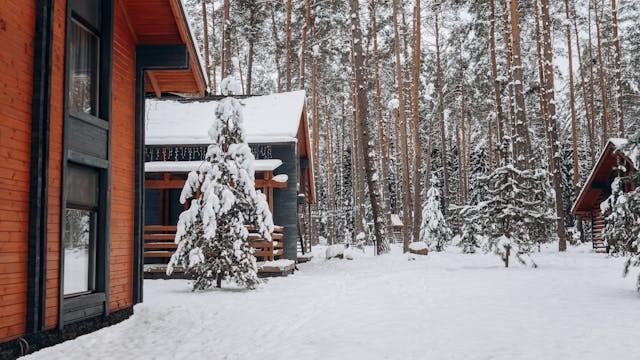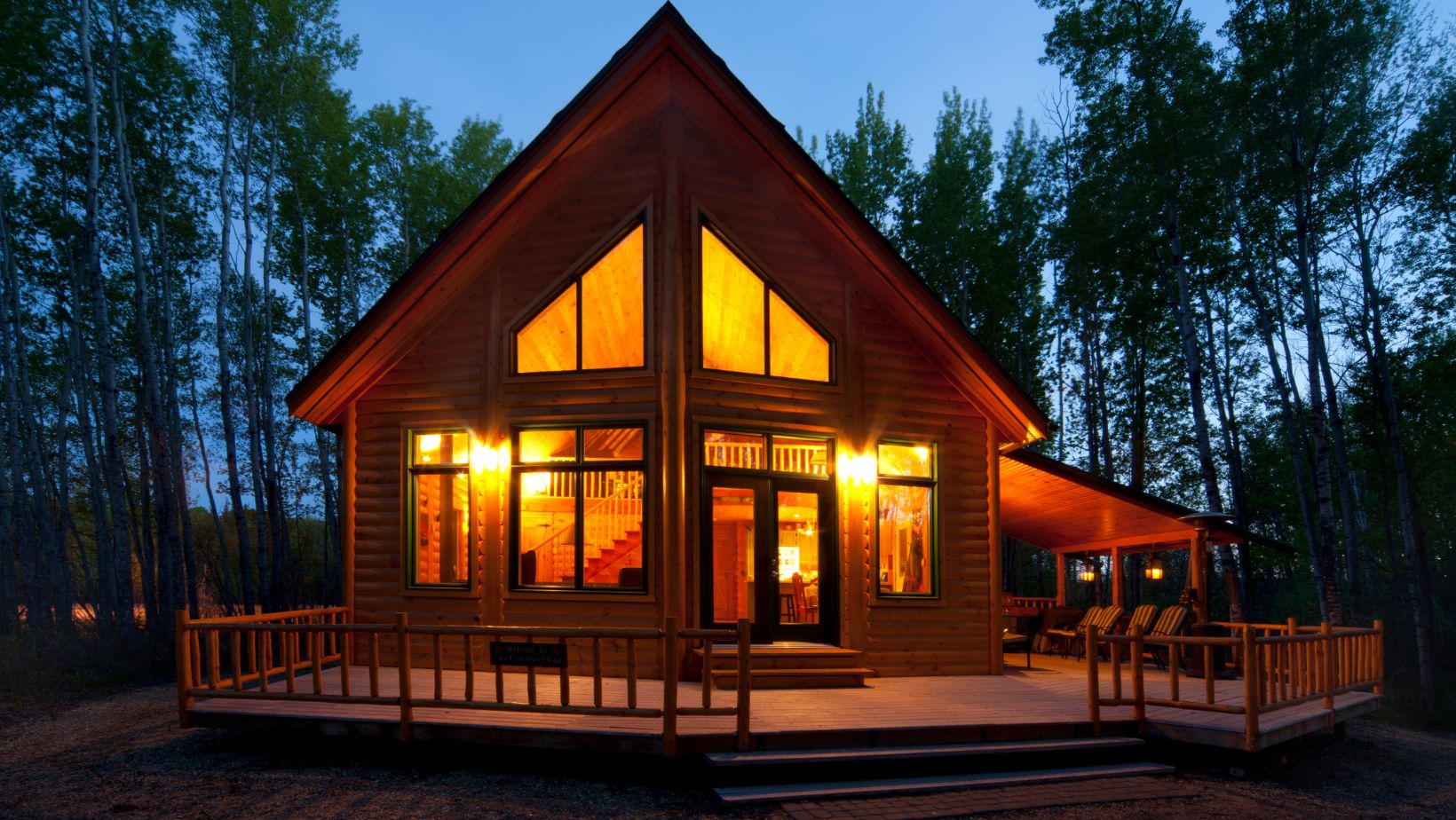Concrete is quickly becoming a favored material for home construction due to its versatility, durability, and ease of maintenance. It is exceptional for walls, flooring, and many other applications.
A relatively new concept for builders is creating concrete logs to resemble wood as an alternative to the traditional wood log cabins. The finished house has the distinct look and feel of an authentic cabin but doesn’t endure the same challenges of wood and is less demanding with its care and upkeep.
In that same vein, concrete does require maintenance; it will last for an extended longevity when well maintained. Basic cleaning, in fact, can help retain a fresh, like-new appearance. Go here for a guide on concrete log siding for homes. What are the maintenance requirements for a concrete log cabin? Let’s learn something new.
Maintaining A Log-Looking Concrete-Sided Home
The latest trend for log homes is to design concrete to look like wooden logs for a unique build. The concept is becoming popular among those who desire a traditional wooden cabin but hesitate due to the extensive care and upkeep.
Concrete “logs” tolerate harsh weather conditions and natural disasters, resist damage from fire, and are unattractive to the vast array of pests naturally drawn to wood. The material is commonly used for walls such as the basement, foundations, flooring, for residential and commercial properties.
It’s strong and highly durable, cost-efficient, a relatively easy to maintain structure, and offers eco-conscious prospective homebuyers an incredibly efficient and environmentally friendly housing option.
With proper care and upkeep, concrete can last an extended lifespan. Visit How Long Does Concrete Log Siding Last?|Articles – to learn the lifespan of concrete siding. Let’s review the standard maintenance tasks for concrete that looks like wooden logs.
A Sealer
With winter quickly approaching, one critical aspect of maintenance is to seal the material before the season sets in. Sealing the concrete helps protect the surface against UV rays and chemicals and reduces moisture.
When moisture absorbs into unsealed concrete, it can freeze in the blustery cold temperatures, creating the potential for cracks.
It’s further recommended to reseal the house before its second winter for an added layer of protection. Once the surface has been sealed twice, you can set a schedule to reseal roughly every three years. The sealer should be appropriate for the climate and concrete type.
Dirt and grime, staining, won’t be able to settle into the concrete; instead, they will sit on the surface where they can be washed away. It’s important, however, to immediately clean substances with the probability of causing a stain.
The Cleanup
Regular care and upkeep are relatively simple and straightforward for concrete-built homes. Cleaning is an essential part of maintenance. Sealing the surface protects the material; however, weather and other outdoor elements can lead to grime and dirt accumulations.
The recommendation is to use a concrete cleaning solution, a neutral pH cleaner, or other mild detergent for routine cleanup. Alkaline or acidic cleaners and harsh chemical solutions can damage concrete.
A pressure washer and scrub brush are effective tools in removing heavy grime or debris; however, it’s important to keep the pressure low and use a wide nozzle to prevent damaging the surface.
Repair Promptly
The structure should be inspected routinely to detect potential issues such as cracks. If breakage or cracking occurs, contact the builder for repair recommendations. The contractor may suggest patching the material with a cementitious product.
You could also fill the cracks with polyurethane foam. Damage should be repaired immediately when it’s found to prevent a worsening problem.
Water will readily seep into cracks and can lead to further damage. Cracks can occur for a number of reasons, including environmental factors. In the winter, freezing and thawing cycles can result in damage.
Concrete can also start to chip, peel, or flake as the house ages. Repairing the surface can be as simple as applying a sealer or coating or resurfacing it with an overlay.
The joint material can be replaced for joints that deteriorate over time, or a sealant can be used to fill voids.
Other Factors To Consider
Concrete can absorb water because it’s a porous material. When moisture seeps in, it can lead to cracks and deteriorate the surface. Keeping gutters and downspouts clear is essential to avoid clogging and seepage over the exterior walls.
Concrete is an incredibly strong and highly durable compound; however, the structures are designed to tolerate a specific weight load. This includes the structure weight as well as the addition of appliances, furnishings, and people.
Homeowners must also be mindful of snow accumulations and storms that produce harsh winds and heavy rainfall. If the weight exceeds the designated capacity, the structure integrity can be compromised, resulting in failure or the possibility of collapse.
If, for instance, a natural disaster leaves the structure compromised, the builder will use fiber or steel bars for reinforcement.
In some cases, damaged or deteriorated sections of the structure may need to be replaced, which experienced contractors can handle, leaving no evidence of a problem.
Professional Preventive Measures for Concrete Structures
Builders follow several precautionary steps when designing and building a concrete log home. The design stage is integral to the home’s strength, durability, and longevity. Designers factor in the climate, the potential for chemical exposure, and the area surrounding the property.
Reputable and qualified builders such as ClearCreek use the highest quality materials with construction, including the concrete, reinforcements, and sealants, and follow a stringent construction protocol to ensure the house’s durability, versatility, and longevity.
Regular preventive inspections should be performed roughly once each year aside from typical and essential household care and upkeep. Contractors can detect defects early and make the necessary repairs before problems worsen. These professionals see issues that homeowners might otherwise not notice.
Enlisting these services can ultimately save money by reducing the likelihood of expensive repairs and the potential for replacing deteriorated sections.
Reliable builders only employ extensively trained and knowledgeable staff versed in concrete maintenance practices. Contractors should be able to recognize and address potential problems as they find them and readily make the necessary repairs.
Final Thought
Many prospective homebuyers interested in log homes hesitate to build a log house due to the extensive care and upkeep required with wood.
A relatively new concept quickly becoming popular involves using concrete material designed to look like wood for the house construction. Quality and qualified builders design and construct the structure to be strong and highly durable.
The product is more tolerant of harsh weather conditions and natural disasters than its wood counterpart, resists damage from perils such as fire, and is resistant to the vast array of pests naturally attracted to wood logs.
The material does require proper and adequate household care and upkeep, along with preventive inspections from a reputable and experienced contractor. Neglecting maintenance can result in safety hazards, expensive repairs, and a decrease in the property value.
Developing a routine preventive maintenance plan along with regular sealing and consistent cleaning can help retain the home’s original aesthetic, making it an appealing addition to the neighborhood and maintaining the property’s value over its lifespan.




More Stories
What Do You Need for an At-Home Proposal?
Flooring: Types, Costs, and How to Choose the Right Floors for Your Home
The Unexpected Freedom That Comes From Understanding Your Dog’s Medicine Cabinet